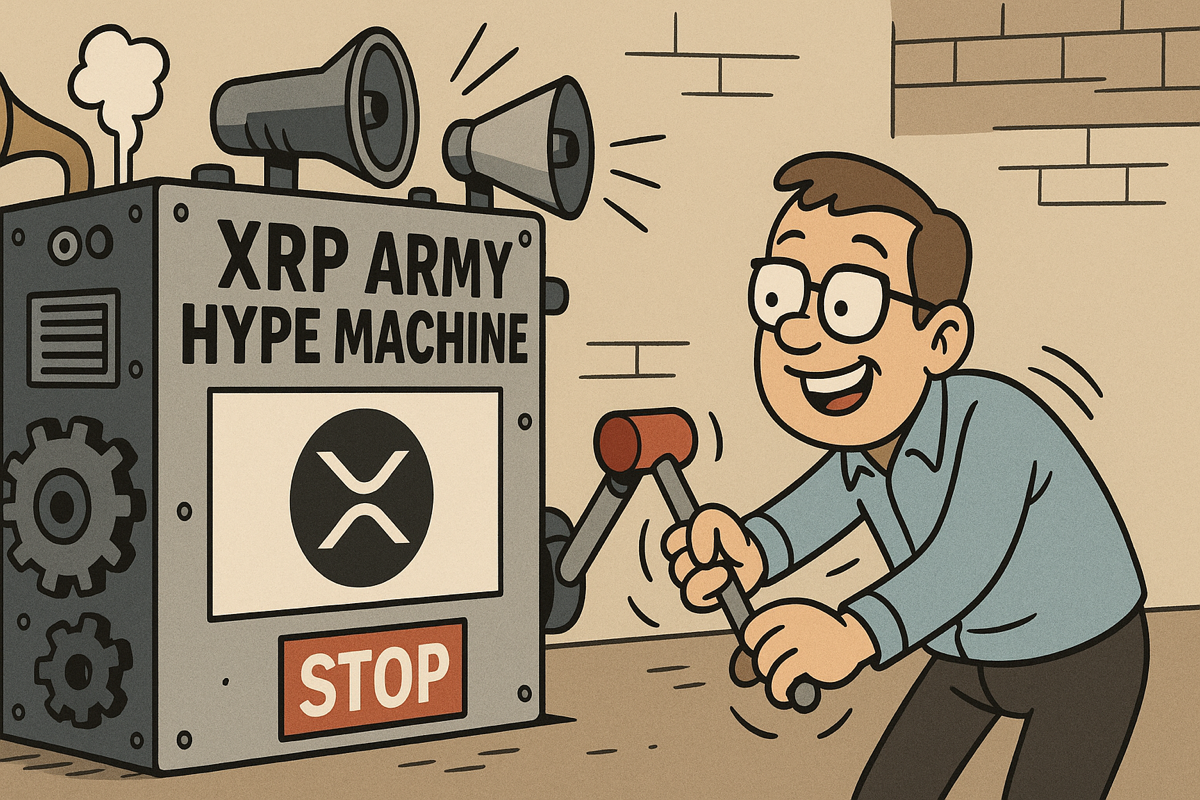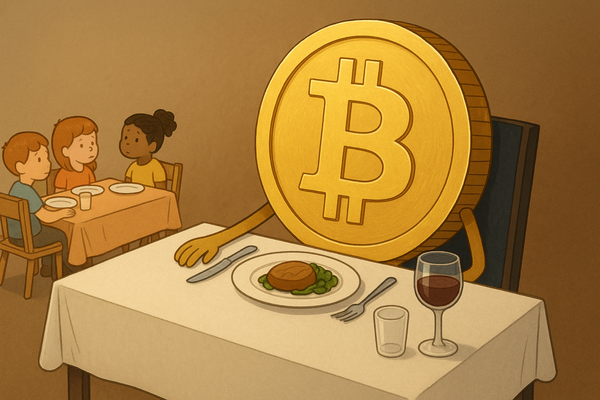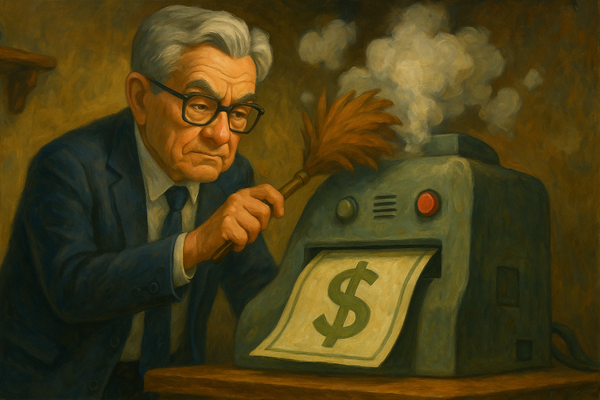XRP: The Reality Check Your Crypto Friend Won't Give You

Picture this: Your buddy who got into crypto six months ago won't stop talking about XRP hitting $100 someday. "Banks worldwide are adopting it!" they insist. "It's the future of money!"
I get it. The XRP army is passionate, the vision is compelling, and everyone loves the idea of getting in early on the next Bitcoin. But before you dive in, let's have the honest conversation about XRP that most influencers and YouTube gurus conveniently skip.
The Centralization Nobody Wants to Talk About
Here's something that would make Satoshi Nakamoto roll in his metaphorical grave: XRP was 100% pre-mined at launch, with a whopping 80% handed directly to Ripple Labs.
Fast forward to today, and Ripple still controls about 48 billion XRP tokens (48% of the total supply). Imagine if a single company controlled half of all Bitcoin. The crypto community would riot! Yet somehow, this massive centralization gets brushed aside in XRP discussions.
This isn't just a philosophical issue. When one company holds that much supply, they can:
- Influence the market by selling tokens
- Prioritize corporate interests over token holders
- Create single-point-of-failure risks that cryptocurrencies were specifically designed to eliminate
Does centralization automatically make XRP a bad investment? No. But it fundamentally changes the risk profile in ways that many new investors simply aren't aware of.
The Great RippleNet Confusion
The most persistent misconception I encounter: "Banks are already using XRP!"
Here's the crucial distinction almost everyone misses: When headlines trumpet "Major Bank Partners with Ripple," they're typically talking about RippleNet (Ripple's messaging system), not the XRP token itself.
Think of it this way:
- RippleNet: A messaging system for banks (like upgrading from fax to email)
- XRP: A cryptocurrency that banks would need to adopt for settlement (like switching from dollars to a volatile digital asset)
These are wildly different propositions. While hundreds of financial institutions have tested RippleNet, only a small fraction actually use XRP for settlements. This gap between perception and reality creates dangerous misunderstandings about XRP's current adoption status.
XRP's Math Problem: What XRP Going to $100 Actually Means
The XRP community loves throwing out price predictions: $10, $100, even $1,000 per token. Let's run the numbers to see what these actually mean:
XRP has a 100 billion token supply. At today's ~$2.34, that's already a $234 fully-diluted billion total market cap. To add further clarity around that, you may notice the free-floating market cap shown on coinmarketcap.com is much lower then stated above. It shows a market cap of $137.66B. The discrepancy is due to the fact that 48b tokens are currently held by Ripple Labs in escrow with a controlled release schedule of ~1B tokens each month into the open market. However, it's important to note that Ripple Labs maintains full control over the terms of the release so the tokens aren't "locked" in the same way they would be in a truly decentralized token model. By maintaining full control, Ripple Labs technically could manipulate the release schedule at their own discretion.
- At $10 per XRP: $1 trillion market cap (half the market cap of BTC)
- At $100 per XRP: $10 trillion market cap (exceeding all crypto combined)
- At $1,000 per XRP: $100 trillion market cap (approaching more than all global stock markets combined)
Could XRP hit $10 under perfect conditions? Perhaps. But anyone promising $100+ is either mathematically challenged or deliberately misleading you based on the current tokenomics and business model.
Ripple's Clever Business Model
How has Ripple Labs funded its development, partnerships, and marketing? By selling XRP - over $1.2 billion worth to date.
This creates an interesting cycle:
- Sell XRP to fund operations
- Use funds for partnerships, political lobbying and marketing
- Generate hype that attracts new buyers
- Sell more XRP at higher prices
This model has worked brilliantly for Ripple Labs. But as an investor, ask yourself: In a system where one company keeps selling large quantities of tokens, who's likely to benefit most in the long run?
The Utility Gap: Trading vs. Actual Use
Despite existing since 2012, XRP's primary use today remains speculative trading, not cross-border payments. The numbers tell the story:
- Trading volume: Often exceeds $1-3 billion daily
- Actual payment volume using XRP: A tiny fraction of this figure
While RippleNet processed around $30 billion in transactions during 2023, only a portion used XRP as the bridge currency. Meanwhile, SWIFT handles over $5 trillion daily.
This doesn't mean XRP can't succeed long-term. But current utility nowhere near justifies the present valuation - something investors should clearly understand.
Common Misunderstandings, Clearly Explained
Misunderstanding #1: "Banks using Ripple = Banks using XRP"
Reality: Most banks use RippleNet without touching XRP. Always check whether announcements involve the messaging system or the actual token.
Misunderstanding #2: "XRP is cheaper than Bitcoin"
Reality: Price per coin is meaningless without considering supply. At $3, XRP's market cap would already be $300 billion - about 14% of Bitcoin's value. Lower price per coin just means there are many more coins.
Misunderstanding #3: "Centralization doesn't matter"
Reality: Centralization creates precisely the risks cryptocurrencies were designed to eliminate. When one company controls development and supply, you're essentially investing in that company's decisions, not a decentralized network.
A Balanced View on XRP Investment
So is XRP worth buying? It depends on your goals:
For traders: XRP offers liquidity and volatility that can be profitable during bull markets, regardless of fundamentals.
For long-term investors: The value proposition hinges on actual adoption of XRP (not just RippleNet) by financial institutions - something that remains limited despite years of development.
Smart investors might:
- Size positions according to the speculative nature of the asset
- Focus on actual adoption metrics, not partnership announcements
- Set realistic price expectations based on supply economics
- Understand that they're primarily betting on Ripple Labs' success
The Highway Analogy That Explains Everything
Think of Ripple as building a magnificent highway system (RippleNet). They're selling parcels of land along this highway (XRP) based on future traffic projections.
The company keeps announcing new entrances and exits, and land speculators are getting excited. But here's the thing: very few cars are actually driving on this highway yet. Most traffic still uses the old roads.
The land might still appreciate based on speculation. But any realistic valuation must consider: what if the projected traffic never materializes at the scale promised?
Conclusion: Eyes Wide Open
XRP remains an intriguing speculative asset with genuine potential. During bull markets, it could deliver significant returns regardless of fundamentals.
However, serious investors should recognize that the long-term investment case depends on factors with considerable uncertainty:
- Ripple Labs' continued success
- Financial institutions adopting XRP (not just RippleNet)
- Regulatory clarity that preserves XRP's utility
- Massive expansion of actual usage beyond current levels
The crypto market ultimately rewards those who can separate narrative from reality. By understanding XRP's actual position rather than its marketed potential, you can make decisions based on facts, not hype - protecting your capital while still participating in cryptocurrency's legitimate opportunities.
WANT TO LEARN MORE? LET'S TALK!
I manage a private crypto fund that works with accredited and institutional investors. If you’re considering exposure for your portfolio, looking to learn more, or exploring strategic partnerships as an allocator or advisor, I'd love to connect!
🚀 Send me an email or a message on LinkedIn.
This article represents my personal views and not formal investment advice. All investments carry risk, and past performance is not indicative of future results. Please do your own research before making any investment decisions.




